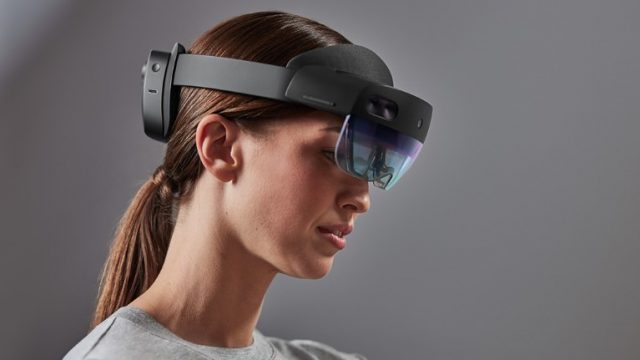Introduction:
It is crazy how technology can redefine our realities, be it virtually, augmented or mixed. VR, AR and MR might appear to be synonyms of each other, but are actually distinguishable as they come from different places and seek to do different things. Currently, in the market, there are mainly 2 different categories of head wears. Generally, VR applications completely takes over user’s vision, blocking out your surroundings when you wear them. On the other hand, AR / MR applications adds on to your vision, projecting images over whatever you look at.
Virtual Reality:
| Valve Index | HP Reverb G2 | Oculus Quest 2 | |
| Price (USD) | $1000 | $600 | $300 |
| Resolution | 1440 x 1600 (2.3MP) per-eye (LCD) | 2160 x 2160 (4.7MP) per-eye (LCD) | 1832 x 1920 (3.5MP) per-eye (LCD) |
| Refresh Rate | 80Hz, 90Hz, 120Hz, 144Hz | 90Hz | 60Hz, 72Hz, 90Hz |
| Lenses | Double element Fresnel | Single element Fresnel | Single element Fresnel |
| Field of View | ~130° diagonal | 114° diagonal | ~90° diagonal |
| Optical Adjustment | IPD, eye-relief | IPD | IPD, eye-relief (via included spacer) |
| IPD Range | 58-70mm | 60-68mm | 58mm, 63mm, 68mm |
| Connectors | USB3.0, DisplayPort 1.2, 12V power | USB-C, DisplayPort, Power | USB-C |
| Cable Length | 5m + 1m breakaway | 6m | – |
| Tracking | StreamVR Tracking 1.0 or 2.0 (external beacons) | Quad on-board camera (no external beacons) | Oculus Insight (no external beacons) |
| Controllers | Valve Index controllers | Reverb G2 controllers | Oculus Touch v3 |
| Audio | Off-ear headphones, 3.5mm aux output | Off-ear headphones | In-head strap speakers, 3.5mm aux output |
| Microphone | Dual microphone | Yes | Yes |
| Pass-through Cameras | Stereo 960 x 960 | Yes | Yes |
My favourite VR headset is Valve Index. Of course, there are few other features to take into consideration, such as the price and space required. However, to judge the quality of VR headsets, my main considerations were tracking performance, field of view and how ergonomic the equipment is. Index offers eye-relief adjustment which allows the user to adjust the distance between lenses and his eyes, maximising the user’s view and comfort, especially for users who wear spectacles. Furthermore, Index has a physical IPD adjustment which ranges from 58mm to 70mm, enabling users to align the lenses with the width of his eyes for the sharpest visuals.
As seen in the table, clearly Index offers better tracking performance and field of view. It is also noted that it has one of the best controllers. Furthermore, it has one of the fastest refresh rates, making things feel even smoother and more present.
It was a tough fight between the Valve Index and the Oculus Quest 2, simply because the Oculus Quest 2 has a little bit of everything and is standalone, and only one third the price. But for me, Valve Index takes first place as it has better specifications for criteria’s I deem more important.

Augmented / Mixed Reality:
Mixed reality stands halfway between augmented and virtual reality where digital content is overplayed and interacts with the user’s environment in real time. Hence, for me, I have decided to rate the available head sets in terms of seamless transition, battery life and field of view.
| Microsoft HoloLens 2 (MR) | Magic Leap One (MR) | Kopin Solos (AR) | |
| Resolution (pixels) | 2048 x 1080 per eye | 1300 pixels per eye | 400 x 240 |
| Field of view | 52° | 50° | 10.6° |
| Refresh Rate | 120Hz | 120Hz | 120Hz |
| Tracking and control | Eye and hand | Eye and hand, with haptics | Eye and hand, with tactile |
| Battery Life (hrs) | 6 | 3 | 5 |
| Degree of Freedom | 6 | 6 | – |
| Price (USD) | $3500 | $2295 | $499 |
My favourite head gear is the Microsoft HoloLens 2 smart glass. Firstly, it has great ease of use as users are able to control the device through gestures and gaze tracking as well as voice support. Microsoft has shown to have near seamless, fast and responsive eye and hand tracking. Also, the headset accurately maps and interacts with the users’ environment thanks to the 4 visible light cameras (head tracking), 2 IR cameras (eye tracking), 1-MP time-of-flight depth sensor and 8MP stills, 1080p30 video cameras. Instead of just measuring interpupillary distance, the embedded Sensors takes a 3D scan of the user’s eyes, enabling a fast and responsive system.
Furthermore, it has one of the best battery life, despite being lightweight. Battery life is especially important if the device is untethered. This is because it just wouldn’t make sense for an untethered gadget to require constant cable charging. Lastly, with the best FOV in the market, the Microsoft HoloLens 2 really outshines the other devices currently in the market.

